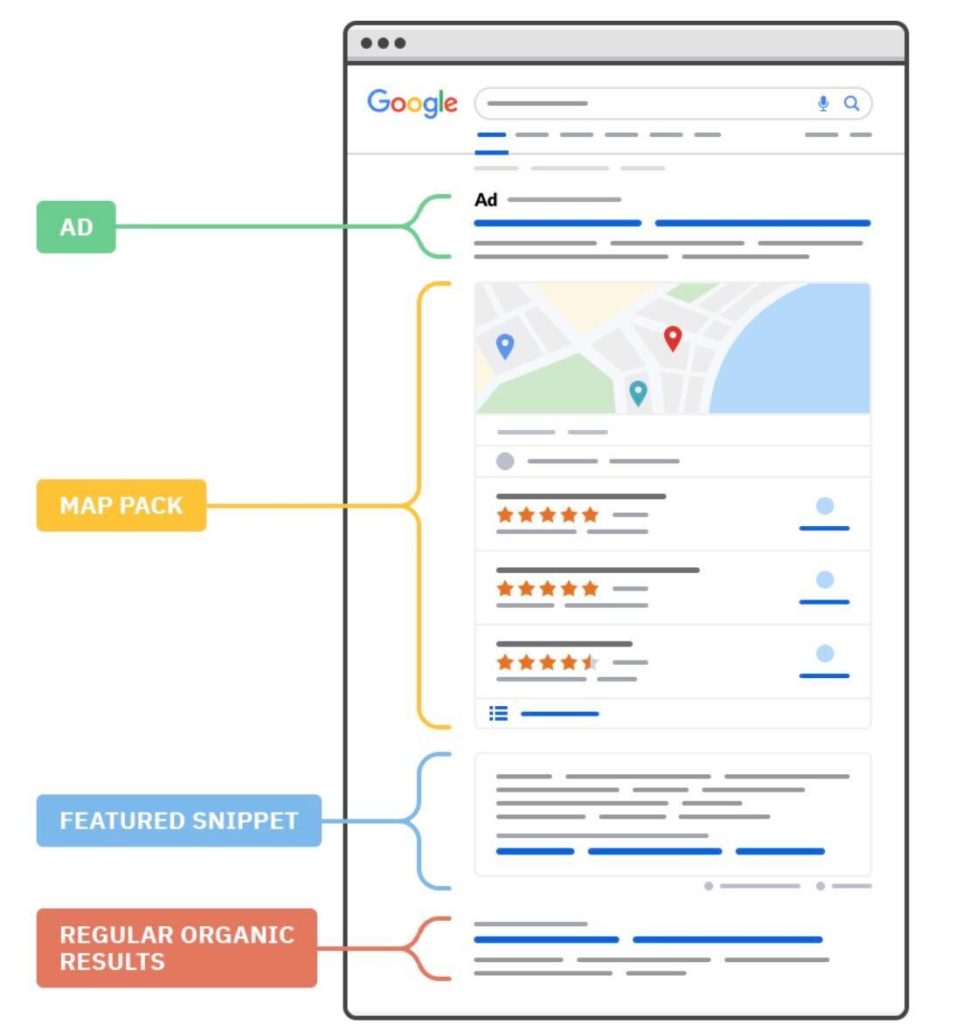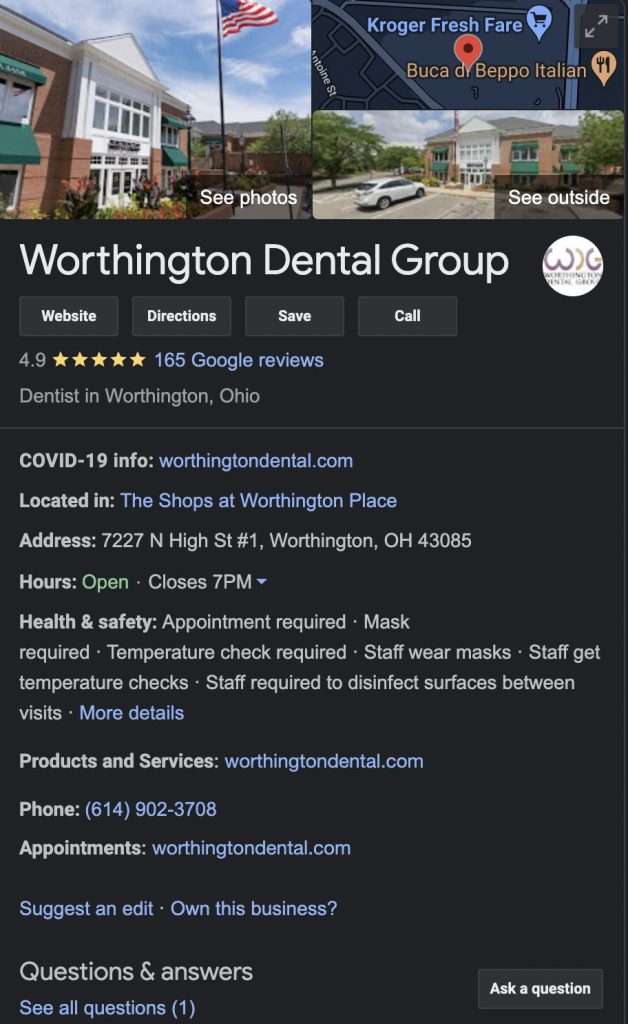Google is the most widely used search engine in the world. According to SEMrush, Google receives over 40,000 search queries per second, equating to over 3.5 billion searches a day. When patients look for a new dentist, they will most likely turn to Google for their search.
Making it easy for patients to discover you on Google is essential in growing your practice, and understanding your options for Google real estate will help you determine what techniques yield the largest return on investment.
Understanding the Search Engine Results Page
All options can all be found in one place: a SERP, or search engine results page. A SERP is the results and websites that populate after a patient enters a specific keyword into the search bar on Google. For example, if a patient searches “Worthington Ohio dentist,” Google will provide a list of dentists and their websites that meet the standards for that specific keyword.
“Because nobody goes to the second or third page of Google, it’s important to try to have some space on that first page,” says Sean White, CEO of Whiteboard Marketing. Dentists must ensure they own as much real estate as possible on Google in order to convert new patients, increase scheduling for services and retain current patients.
Where Can My Practice Show Up on Google?
The most important areas to own real estate on Google’s search engine results page include pay-per-click, the local 3-pack, map ads and search engine optimization results, or SEO.
Google Pay-Per-Click
The first opportunity a dentist has to show up on a SERP is Google Pay-Per-Click, or PPC. These are the advertisements found at the very top of the page with an “Ad” label next to their website link.
“If you just started your practice or you haven’t done any digital marketing before, you will want to invest in proactive lead generation, such as Google PPC. Once your campaign is set up, you turn the switch on and it can start delivering ads fairly quickly,” White says.
Each time a patient “clicks” into the ad, Google will charge a specific amount based on the competition of the keyword searched.
“It’s important to talk to your marketing partner about the budget you should invest in for your PPC ads. Our PPC department always recommends spending at least $1,000 per month,” White says. “If you’re really trying to move the needle and generate new patients, you will need to be strategic in the budget you put behind your PPC ads to bring in phone calls, new patient forms and beat out competition that may be bidding higher on keywords.”
Local 3-Pack
The next opportunity a dentist can find on a SERP is the local 3-pack. When patients search “dentist near me,” a map of the surrounding area will populate with three local business profiles.
“The local 3-pack consists of the three Google Business Profile knowledge panels that will populate based on the relevancy of your search, the proximity of where you are physically searching from and how many reviews your practice has,” White says.
A Google Business Profile offers business information like phone numbers, office hours and reviews from Google, Facebook and other review websites. It is important that you claim and optimize your Google Business Profile to ensure your practice is seen above or before your competitor in the local 3-pack.
Map Ads
Map ads are members of the pay-per-click family. They can be found within the local 3-pack section of a SERP. Notice the word “Ad” next to the top map result in this search for “Worthington Ohio Dentist.”
“You can bid on keywords to buy your way to the very top of the local 3-pack,” White says. “If your practice is struggling to populate within the local 3-pack and you want to guarantee that you will show up for certain keywords on the map area, you can bid on those keywords to outrank your competitors.”
Search Engine Optimization
The last area your practice can own real estate on Google is the search engine optimization results, or SEO. SEO is the practice of improving a website’s user experience and content in order to generate more organic traffic to the site. By driving more patients to your website, you increase opportunities to convert them into a new patient. Google has over 200 ranking factors, and it is important to stay up-to-date on the best practices from Google for optimal performance.
“These results are 60% to 70% of what your prospects will actually click on a search engine results page, so it’s definitely important to do what you can from an SEO perspective to show up one or more times in that area,” White says.
Need Help Owning Real Estate on Google?
Google has many faces, and understanding each of these is important to help your practice own as much real estate as possible on a SERP. Being featured in PPC ads, the local 3-pack, map ads and SEO results provides your practice more visibility on a search page when patients are looking for a new dentist. The more real estate you can own, the easier it is for potential patients to discover you, learn more about you and convert into a new patient of yours.
At Whiteboard Marketing, our SEO and PPC specialists are experts at helping dentists attract, acquire and retain the patients they want through Google search and advertising. Contact us today to get started.
NOTE: This blog originally appeared as an article in the September/October 2021 issue of Today’s FDA magazine, the official publication of the Florida Dental Association, with the title “The Many Faces of Google: How to Own Real Estate on Google When a Patient Searches for a New Dentist.”









